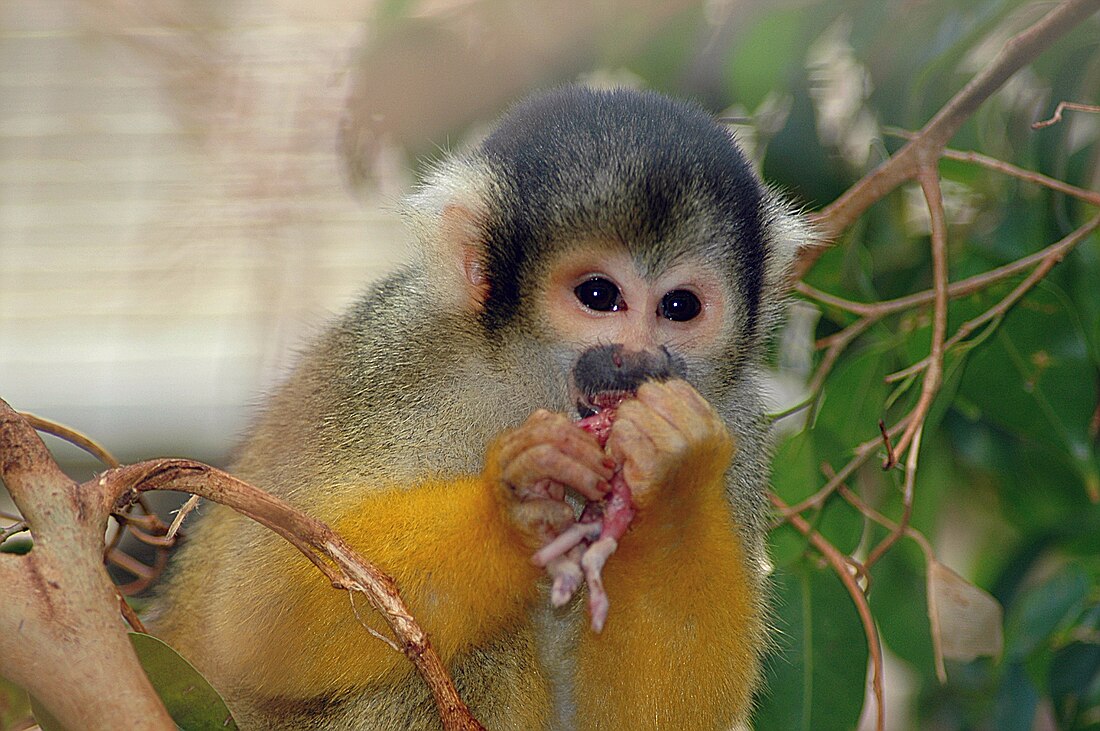The haplorhines, the "dry-nosed" primates (the Greek name means "simple-nosed"), are members of the Haplorhini clade: the prosimian tarsiers and all of the true simians. The simians are the catarrhines (Old World monkeys and apes, including humans) and the platyrrhines (New World monkeys).
| Haplorhini Temporal range: Palaeocene – Recent | |
|---|---|
 | |
| Common squirrel monkey (Saimiri sciureus) | |
| Scientific classification | |
| Domain: | Eukaryota |
| Kingdom: | Animalia |
| Phylum: | Chordata |
| Class: | Mammalia |
| Order: | Primates |
| Suborder: | Haplorhini |
Classification
- Suborder Haplorrhini: tarsiers, monkeys and apes
- Infraorder Tarsiiformes
- Family Tarsiidae: tarsiers
- Infraorder Simiiformes
- Parvorder Platyrrhini: New World monkeys
- Family Callitrichidae: marmosets and tamarins
- Family Cebidae: capuchins and squirrel monkeys
- Family Aotidae: night or owl monkeys (douroucoulis)
- Family Pitheciidae: titis, sakis and uakaris
- Family Atelidae: howler, spider and woolly monkeys
- Parvorder Catarrhini
- Superfamily Cercopithecoidea: Old World monkeys
- Family Cercopithecidae
- Superfamily Hominoidea: apes
- Family Hylobatidae: lesser apes (gibbons)
- Family Hominidae: great (large) apes including humans
- Superfamily Cercopithecoidea: Old World monkeys
- Parvorder Platyrrhini: New World monkeys
- Infraorder Tarsiiformes
Wikiwand in your browser!
Seamless Wikipedia browsing. On steroids.
Every time you click a link to Wikipedia, Wiktionary or Wikiquote in your browser's search results, it will show the modern Wikiwand interface.
Wikiwand extension is a five stars, simple, with minimum permission required to keep your browsing private, safe and transparent.
